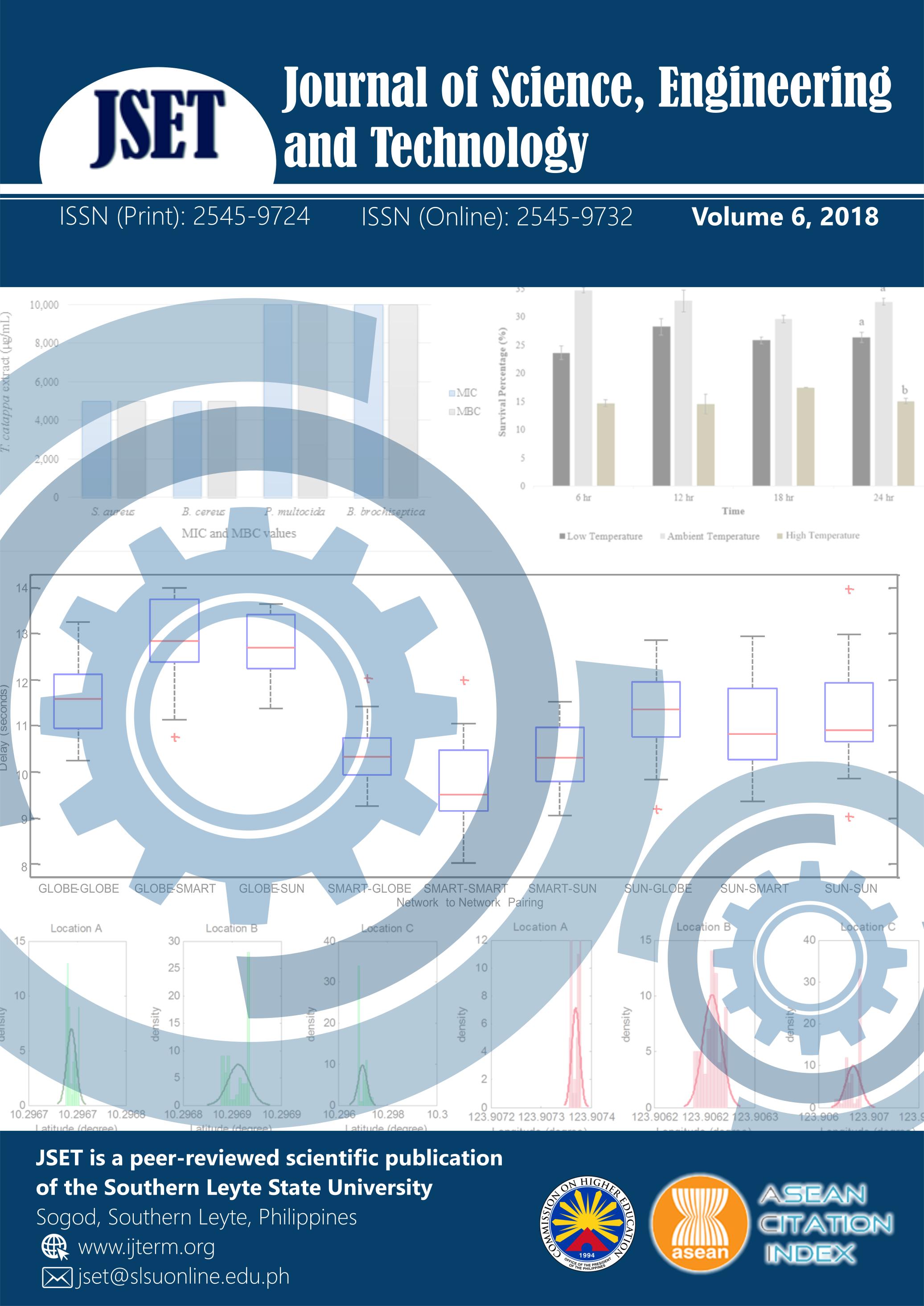Molluscicidal activity of Jatropha curcas L. crude leaf extracts against Oncomelania hypensis quadrasi Mollendorf
DOI:
https://doi.org/10.61569/g13jw651Keywords:
Herbal molluscicide, Schistosomiasis, Tuba-tuba leaves, LD50, Bioactive compoundsAbstract
The molluscicidal property of various leaf extracts prepared from tuba-tuba Jatropha curcas L. were tested against freshwater snail (Oncomelania hupensis quadrasi), an intermediate host of Schistosoma sp., the causative agent of schistosomiasis. Highest mortality of 80% was obtained using crude petroleum ether extract (CPE) at a concentration of 1.5 mg mL-1, and this was comparable with the positive control consisting of commercial molluscicide Niclosamide (100%) at a concentration of .002 mg mL-1. For crude ethanolic extract (CEE), snail mortalities of 92% and 84% were obtained at concentrations of 1.5 mg mL-1 and 0.75 mg mL-1, respectively, and these values were not significantly different from the commercial molluscicide Niclosamide. One-hundred percent (100%) snail mortality was achieved with the application of 1,100 mg mL-1 crude aqueous extract (CAE) of tuba-tuba leaves. Considering the test conducted to determine the concentration needed to kill 50% of the freshwater snails after 24 h (LD50), the toxicity of various extracts is in the order of CEE>CPE>CAE with values 0.45>0.49>167.23 mg mL-1, respectively. Qualitative analysis of bioactive compounds in J. curcas leaves indicated the presence of alkaloids, tannins, terpenoids, flavonoids, and saponins. Terpenoids, the most toxic compounds in J. curcas, were detected in CPE and CEE, but not in CAE. Overall, this study has demonstrated the potential of various extracts of tuba-tuba leaves as a replacement for commercially available molluscicide in eradicating the vector snail of Schistosoma sp.
Downloads
Published
Issue
Section
License
Copyright (c) 2018 Journal of Science, Engineering and Technology (JSET)

This work is licensed under a Creative Commons Attribution 4.0 International License.
This is an open access article distributed in accordance with the Creative Commons Attribution 4.0 Unported (CC BY 4.0) license, which permits others to copy, redistribute, remix, transform and build upon this work for any purpose, provided the original work is properly cited, a link to the license is given, and indication of whether changes were made. See: Creative Commons Attributions 4.0 International License.








